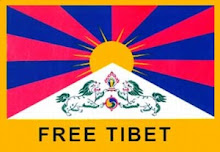

«L’avventura della musica etiopica moderna cominciò durante il regno dell’imperatore Menelik II (1889-1913). Quest’avventura, che da più di due decenni mi sforzo di studiare e di far conoscere, è strettamente legata all’influenza degli strumenti a fiato offerti al sovrano abissino dopo la vittoria di Adua. Nel 1897 lo zar di Russia, Nicola II, inviò in omaggio al vincitore e suo fratello nella fede ortodossa un kit completo per fanfara, ovvero una quarantina di ottoni. Fu così che nacque la prima banda imperiale. In occasione delle udienze diplomatiche o durante i
gheber (banchetti offerti dall’imperatore a migliaia di convitati) la fanfara suonava con la stessa disinvoltura sia inni russi o francesi sia pezzi più leggeri come
Frou-Frou o
La casquette de père Bugeaud.
Nel 1924 Ras Tafari, principe reggente e futuro Hailé Selassié, decise di compiere un lungo giro diplomatico in Europa per celebrare l’ammissione dell’Abissinia nella Società delle nazioni. Allora, in piena epoca coloniale, era l’unico stato africano a far parte dell’organizzazione. Prima del suo viaggiò Ras Tafari andò in pellegrinaggio a Gerusalemme. La fanfara che l’accolse in Terra santa lo impressionò a tal punto che decise di assumerla affinché diventasse l’orchestra ufficiale dell’impero. Era una banda composta da quaranta armeni sfuggiti al genocidio turco del 1915. Gli Arba lijoch, i «quaranta ragazzi», sotto la guida del loro direttore reclutato al Cairo, l’armeno Kevork Nalbandian, diventarono così la prima orchestra ufficiale dell’impero. Nalbandian scrisse, su richiesta del reggente, l’inno nazionale etiopico e si sforzò di mettere insieme un repertorio fortemente “etiopizzato”, ispirandosi alle melodie tradizionali locali. Sotto il suo impulso, la musica etiopica “all’europea” s’impose nel paese. Alla vigilia dell’invasione italiana del 1935, i musicisti che facevano parte delle diverse bande ufficiali erano 250. Alla liberazione, nel 1941, Nerses Nalbandian, nipote di Kevork, contribuì enormemente allo sviluppo della musica etiopica moderna.
Sulla sua scia, altri direttori d’orchestra europei furono invitati nella capitale etiopica. […] Il viennese Franz Zelwecker, pianista e direttore d’orchestra, appassionato di jazz alla Glenn Miller, diede un contributo determinante a quello che negli anni sessanta sarebbe diventato il groove etiopico, caratterizzato dal ricco suono degli ottoni. Con i migliori elementi delle bande imperiali, creò la sezione “sinfonia jazz” dell’Orchestra della guardia d’onore, che comprendeva almeno dieci fiati. Lo swing mise radici in Etiopia con i suoi stereotipi, il suo profumo di modernità e la sua eleganza. Dal 1955 al 1974 – anno della caduta dell’imperatore – l’Etiopia visse due decenni musicali favolosi e singolari, la sua età dell’oro. Nel 1963 Addis Abeba, il cui nome significa “il fiore nuovo”, diventò la sede permanente dell’Organizzazione dell’unità africana (Oua). La città, creata nel 1880 da Menelik II, si trasformò in un centro cosmopolita grazie all’influenza esercitata da una nutrita comunità diplomatica.
Ancora una volta, però, non furono le musiche africane a incontrare il favore del pubblico, ma quelle provenienti dall’Europa e dagli Stati Uniti. Addis Abeba vide spuntare grandi alberghi e locali notturni dove esplose la nuova musica urbana etiopica, in cui si mescolavano melodie tradizionali, rhythm’n’blues e soul. Da Asmara radio Kagnew, l’emittente delle forze armate statunitensi di stanza in Etiopia, trasmetteva tutti i successi degli anni Sessanta, che da lì arrivavano ad Addis Abeba. Quello fu il periodo di un’inimmaginabile “swinging Addis”, versione africana della celebre “swinging London”. Il 1974 fu un anno funesto, in cui cominciò la lunga notte della dittatura di Mengistu: coprifuoco ininterrotto per diciotto anni, orchestre smantellate e musicisti in esilio, estetica ispirata al realismo socialista e censura. L’età dell’oro era finita.
Quel che resta di quella straordinaria avventura è una musica che, malgrado le influenze occidentali, ha sempre mantenuto una forte ispirazione nazionale e un carattere davvero originale. Basta ascoltare Getachew Mekurya, l’inventore del “sassofono shellela”. Questo gigante fisico e musicale ha saputo trasporre sul suo strumento gli shellela, i canti e gli urli d’incoraggiamento e di guerra tradizionali. A metà degli anni cinquanta Mekurya, che suonava nella Police Orchestra, si esibiva in violenti assolo degni del free-jazz, che hanno fatto di lui una specie di Albert Ayer etiope. I suoi connazionali, così sciovinisti, hanno capito immediatamente da dove veniva quella musica e l’hanno adottata nonostante le sue dissonanze puramente free. Grazie, Adolphe Sax.» (Francis Falceto, curatore della collana Ethiopiques per l’etichetta francese Buda Musique. Articolo originariamente apparso su Le Nouvel Observateur, tradotto per Internazionale, n. 659, 15/21 settembre 2006).
Link in comments

























































